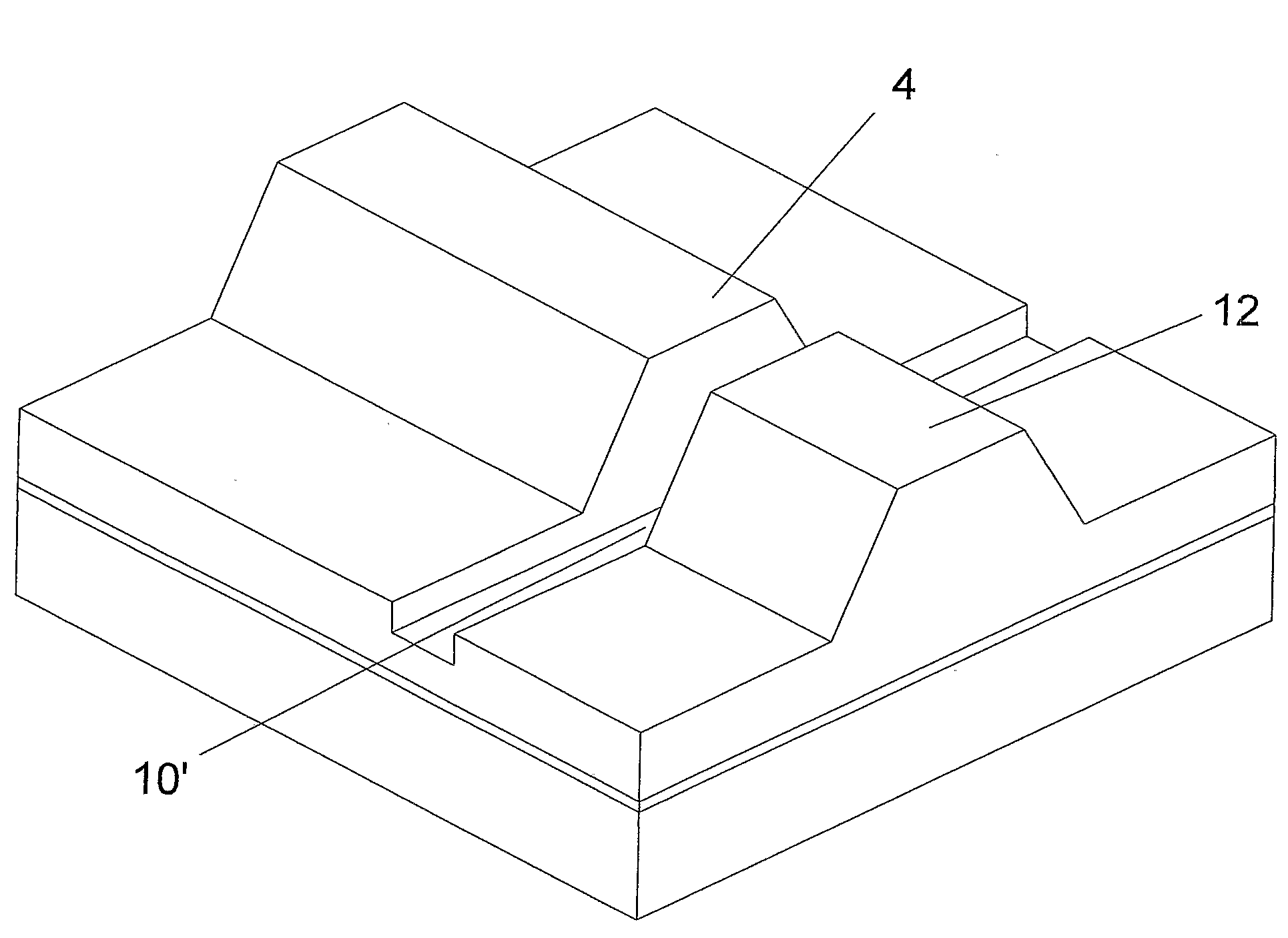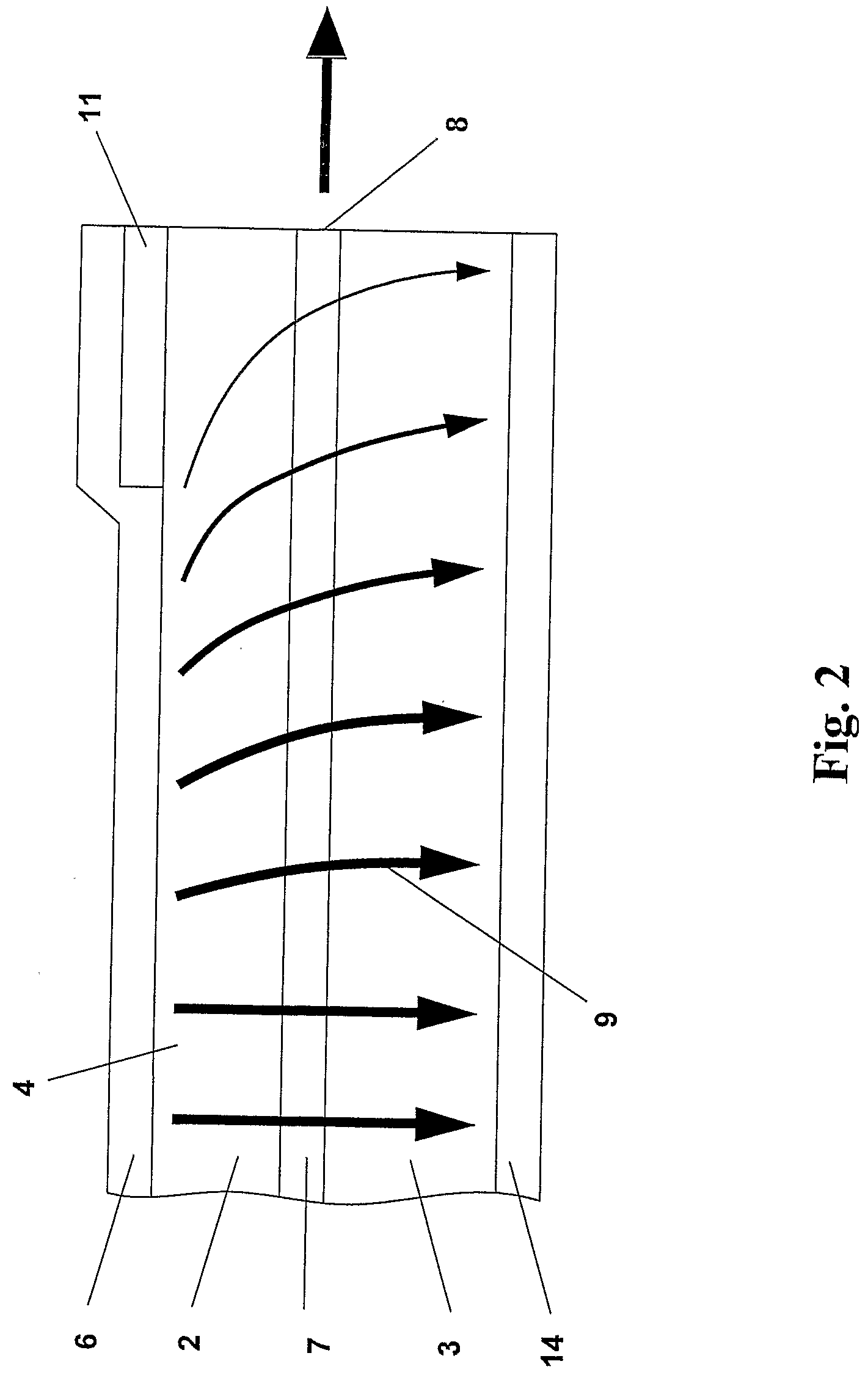High Power Semiconductor Laser Diode
a laser diode, high-power technology, applied in the direction of lasers, laser details, electrical equipment, etc., can solve the problems of increasing the failure rate at high optical output power, increasing the manufacturing complexity and consequently the price of products, and reducing the size of such a novel laser diode. , the effect of increasing the power outpu
- Summary
- Abstract
- Description
- Claims
- Application Information
AI Technical Summary
Benefits of technology
Problems solved by technology
Method used
Image
Examples
Embodiment Construction
[0025]In the following, several embodiments of the invention shall be described by way of example only and by reference to the drawings, which illustrate in:
[0026]FIG. 1 a schematic, perspective, “exploded” view of the structure of a prior art ridge waveguide laser diode;
[0027]FIG. 2 the current distribution in a schematic cross section of a prior art ridge waveguide laser diode, adjacent to the front facet;
[0028]FIG. 3 the current distribution in a schematic cross section of a ridge waveguide laser diode according to the present invention, adjacent to the front facet;
[0029]FIGS. 4a-4h schematic, perspective views of several laser diodes according to the present invention;
[0030]FIGS. 5a, 5b a schematic plan view of the use of the invention in a specific design of a cleaved laser;
[0031]FIG. 6 a graph showing simulated losses for the zero order mode and the first order mode of a laser diode according to the invention; and
[0032]FIG. 7 a graph comparing failures of a prior art laser dio...
PUM
 Login to View More
Login to View More Abstract
Description
Claims
Application Information
 Login to View More
Login to View More - R&D
- Intellectual Property
- Life Sciences
- Materials
- Tech Scout
- Unparalleled Data Quality
- Higher Quality Content
- 60% Fewer Hallucinations
Browse by: Latest US Patents, China's latest patents, Technical Efficacy Thesaurus, Application Domain, Technology Topic, Popular Technical Reports.
© 2025 PatSnap. All rights reserved.Legal|Privacy policy|Modern Slavery Act Transparency Statement|Sitemap|About US| Contact US: help@patsnap.com



